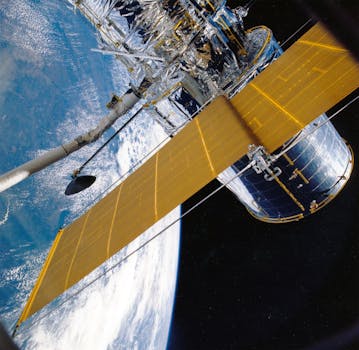
GEO Satellites: Understanding the Technology and Applications
GEO satellites, or Geostationary Earth Orbit satellites, are a type of satellite that orbits the Earth at an altitude of approximately 36,000 kilometers. At this altitude, the satellite’s orbital period matches the Earth’s rotational period, allowing it to remain stationary over a fixed point on the Earth’s surface. This unique characteristic makes GEO satellites ideal for a variety of applications, including telecommunications, weather forecasting, and navigation.
The technology behind GEO satellites is complex and involves a range of sophisticated systems. The satellite itself is typically equipped with a range of instruments, including transponders, antennas, and solar panels. The transponders are used to receive and retransmit signals, while the antennas are used to transmit and receive data. The solar panels provide power to the satellite, allowing it to operate for extended periods of time.
Applications of GEO Satellites
GEO satellites have a wide range of applications, including telecommunications, weather forecasting, and navigation. In the field of telecommunications, GEO satellites are used to provide global coverage, enabling communication between different regions of the world. They are also used to broadcast television channels, providing entertainment and news to millions of people around the world.
In addition to telecommunications, GEO satellites are also used for weather forecasting. By orbiting the Earth at a fixed altitude, GEO satellites can provide continuous coverage of the Earth’s surface, allowing meteorologists to track weather patterns and predict storms. This information is used to provide early warnings of severe weather, helping to protect people and property.
GEO satellites are also used for navigation, providing location information to a range of devices, including smartphones and GPS receivers. This information is used to determine the device’s location, velocity, and time, enabling a range of applications, including navigation, tracking, and mapping.
Advantages and Limitations of GEO Satellites
GEO satellites have a number of advantages, including global coverage, high bandwidth, and reliability. They are also relatively low maintenance, as they can operate for extended periods of time without the need for servicing. However, GEO satellites also have some limitations, including high launch costs, limited flexibility, and potential interference from other satellites.
Despite these limitations, GEO satellites remain a crucial part of modern telecommunications, providing global coverage and enabling a wide range of applications. As technology continues to evolve, it is likely that GEO satellites will play an increasingly important role in the future of telecommunications.
Conclusion
In conclusion, GEO satellites are a vital component of modern telecommunications, providing global coverage and enabling a wide range of applications. The technology behind GEO satellites is complex and involves a range of sophisticated systems. While they have a number of advantages, including global coverage and high bandwidth, they also have some limitations, including high launch costs and limited flexibility. Despite these limitations, GEO satellites remain a crucial part of modern telecommunications, and their importance is likely to continue to grow in the future.






